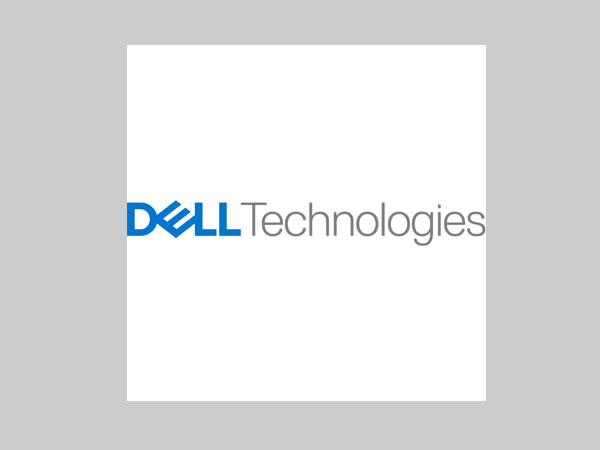
Dell Technologies Reimagines Dell EMC VxRail to Offer Greater Performance and Storage Flexibility
Dell Technologies announces Dell EMC VxRail hyperconverged infrastructure (HCI) systems with enhanced performance based on recently launched Dell EMC PowerEdge servers. The leader in HCI systems1 also delivers new software advancements and the introduction of dynamic nodes that evolve how customers use VxRail to more effectively use existing resources and support demanding workloads with Dell Technologies storage.
As the only HCI system jointly engineered with VMware, VxRail delivers unique automation and orchestration capabilities that allow its more than 12,000 customers to accelerate business outcomes across core data centers, cloud and edge locations. According to IDC research, VxRail customers experienced 452% five-year ROI, 70% more productive IT teams and 92% less unplanned downtime compared to previous IT environments.2
“Today’s updates have been designed keeping our customers’ changing business and IT transformation needs in mind,” said Grainger Wallis, Senior Vice President, Cloud and Data Storage Solutions, Asia Pacific & Japan (APJ), Dell Technologies. “The VxRail dynamic nodes will introduce connectivity with our Dell EMC PowerStore, PowerMax and Unity XT storage systems to provide more flexible storage options when it comes to scaling and addressing workloads and enable organizations better manage their storage resources.”
“We have been witnessing rapid adoption in HCI solutions, owing to the current changes in business landscape. Organizations are focused towards deploying solutions that are flexible and scalable in nature, offering agility to their business operations”, said Amit Luthra, Director and General Manager, Data Center Solution, Dell Technologies India. “With the new VxRail systems, we offer brisk performance to our customers and empower them with better deployment control. The new solutions will allow customers to optimize their business needs and process extensive workloads at a reduced operational cost. Moreover, with Dell EMC VxRail dynamic nodes, customers can now expand VxRail’s operational model to external storage by sharing VMware vSAN storage capacity across clusters via VMware vSAN HCI Mesh”.
Extreme performance for mission-critical workloads
New VxRail systems with the latest Dell EMC PowerEdge server technology, including 3rd Generation Intel Xeon® Scalable processors, deliver 42% more cores for faster performance when compared to previous generations.3 Optional Intel Optane persistent memory 200 series increases bandwidth by 32% on average over the previous generation.4
Select VxRail systems are also being updated with 3rd Generation AMD EPYC™ processors, offering customers flexibility and scalability with up to 64 cores per processor with increased performance5 to support a wide range of workloads and use cases.
Continued advancements to VxRail HCI System Software allow for a seamless experience when adopting next generation platforms with simplified VxRail deployment and management. Other VxRail system enhancements include:
- VxRail V Series now offers NVIDIA A40 or A100 Tensor Core GPU options. When combined with NVIDIA AI Enterprise software and NVMe caching capabilities, they offer greater performance and simpler deployment for demanding AI and machine learning applications.
- VxRail P Series provides up to a 20% increase in capacity to better support a range of workloads such as VDI, streaming video and medical imaging.
- VxRail E Series offers customers more flexibility with 50% more PCIe slots to add additional resources such as network or fibre channel cards.
Customers can also expect faster application response from Intel-based PowerEdge systems with the addition of PCIe Gen 4, which doubles bandwidth and offers 33% more PCIe lanes to speed data processing.6
Introducing Dell EMC VxRail dynamic nodes
Dell Technologies introduces VxRail dynamic nodes—compute-only systems designed to help customers simplify operations, better manage storage resources and reduce costs by supporting more workloads and extending VxRail environments to include external storage options. Customers can expand VxRail’s operational model to external storage by sharing VMware vSAN storage capacity across clusters via VMware vSAN HCI Mesh.
VMware Cloud Foundation on VxRail, as a hybrid cloud infrastructure platform, can be configured with dynamic nodes to use Dell EMC PowerStore, PowerMax or Unity XT as primary storage. Customers can flexibly scale compute and storage independently to meet workload needs, extending VxRail’s operational model and tight VMware integration including support for VMware Virtual Volumes with a single source of Dell support.
VxRail software supports self-deployment and latest VMware releases
VxRail HCI System Software advancements give customers greater control over installation with new self-service tools. Customers can validate, orchestrate and automate cluster deployment on their own time, ideal for enterprises with remote or distributed environments. Additional software capabilities allow customers to better meet workload demands by dynamically redeploying or reallocating nodes within clusters.
Further software advancements make lifecycle management (LCM) even more streamlined by offering VMware updates, such as NSX-T and Tanzu, in a single upgrade cycle. LCM is further simplified by adding the NVIDIA AI Enterprise and VMware installation bundle to the LCM process for easier deployment. Customers can meet maintenance windows with more flexible upgrade options and automatically validate infrastructure with enhanced compliance reporting.
- IDC WW Quarterly Converged Systems Tracker, Q4 2020, March 2021, Hyperconverged Systems Revenue Share
- IDC Business Value White Paper, sponsored by Dell Technologies and Intel, The Business Value of Dell EMC VxRail and VMware Cloud Foundation on Dell EMC VxRail , doc #US47005920, December 2020
- Based on internal Dell Technologies research (February 2021) comparing VxRail based on 15th generation PowerEdge technology to VxRail based on 14th generation PowerEdge technology. Actual results will vary
- See https://edc.intel.com/content/www/us/en/products/performance/benchmarks/200-series/ for more details. Results may vary.
5. Based on AMD internal testing as of 02/1/2021, average performance improvement at ISO-frequency on an AMD EPYC™ 72F3 (8C/8T, 3.7GHz) compared to an AMD EPYC™ 7F32 (8C/8T, 3.7GHz), per-core, single thread, using a select set of workloads including SPECrate®2017_int_base,SPECrate®2017_fp_base, and representative server workloads. SPEC® and SPECrate® are registered trademarks of Standard Performance Evaluation Corporation. Learn more at spec.org. - Based on internal Dell Technologies research (February 2021) comparing VxRail based on 15th generation PowerEdge technology to VxRail based on 14th generation PowerEdge technology. Actual results will vary.
